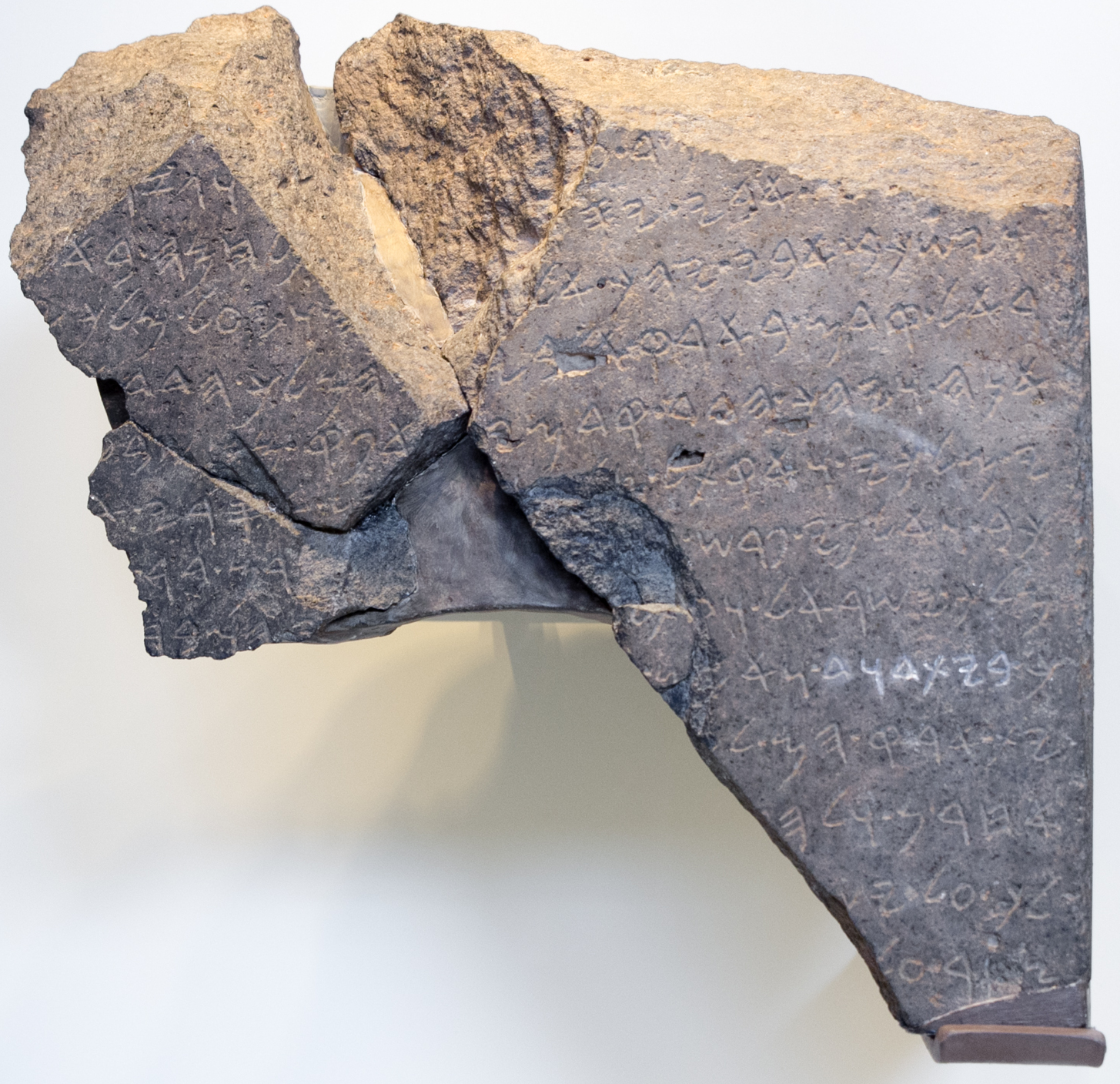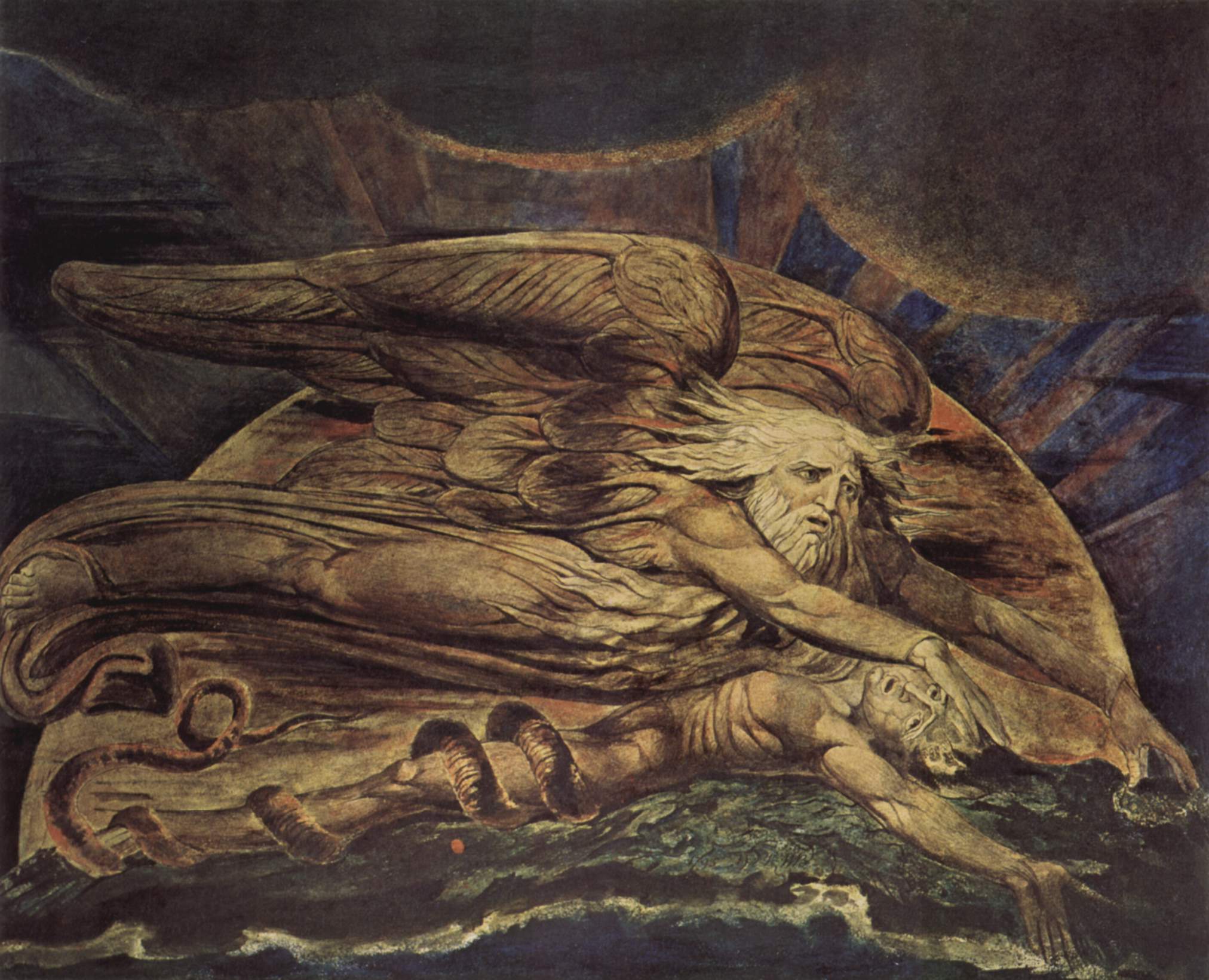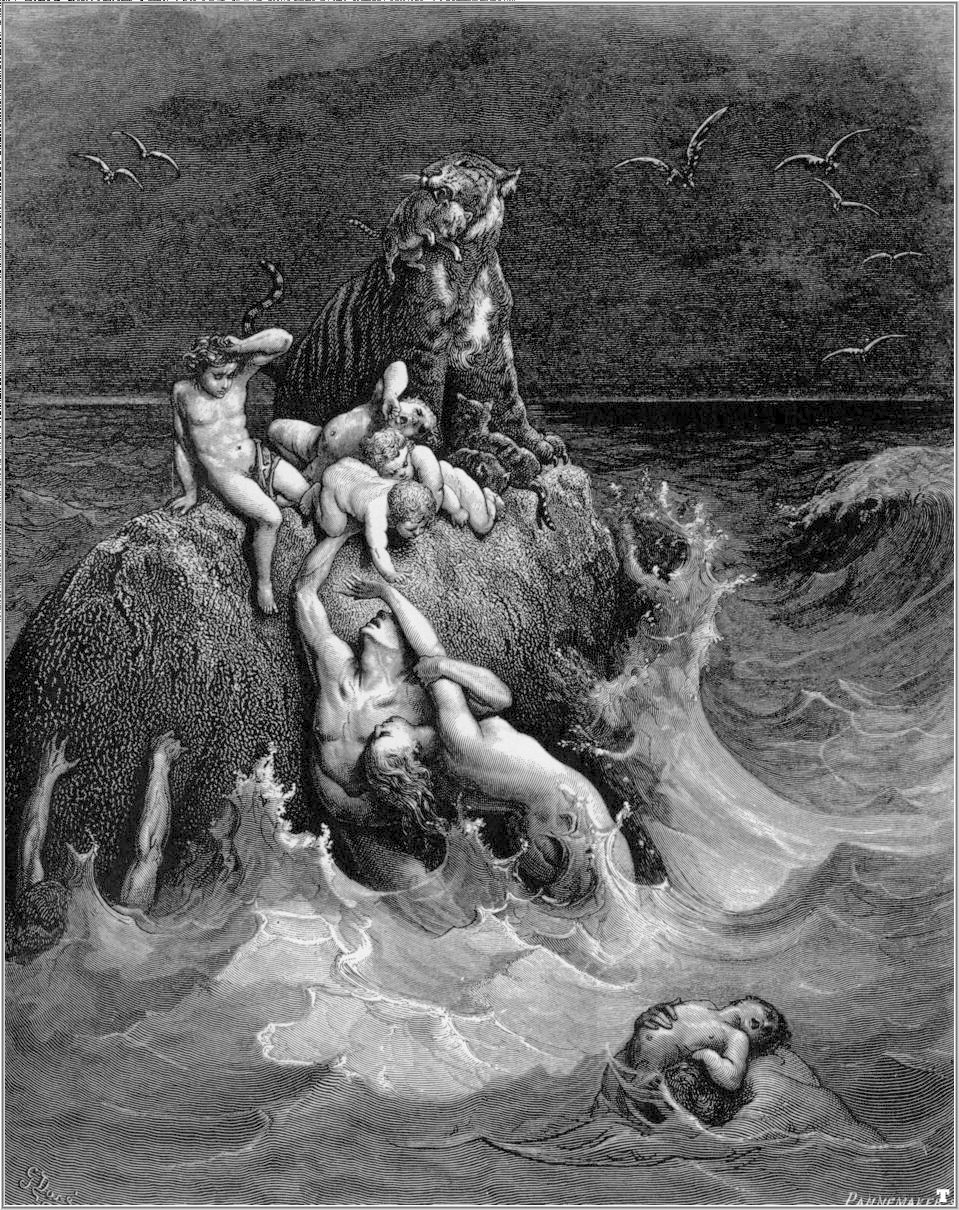|
Tanna Debe Eliyahu
''Tanna Devei Eliyahu'' (Hebrew: תנא דבי אליהו; alternate transliterations include ''Tana D'vei Eliyahu'' and ''Tana D'vei Eliahu'') is the composite name of a midrash, consisting of two parts, whose final redaction took place at the end of the 10th century CE. The first part is called "''Seder Eliyahu Rabbah''" (31 chapters); the second, "''Seder Eliyahu Zuṭa''" (15 chapters). The two sections: Rabbah and Zutta This midrash is referred to in the Talmud: Regarding the last line, Rashi explains that "Rabbah" refers to what was taught before this incident ("outside the box") and "Zutta" to what was taught after the incident ("inside the box"). Anan was a Babylonian amora of the 3rd century. The collection of baraitot concerning him, referred to in this midrash, is cited in the Babylonian Talmud under the title "''Tanna debei Eliyahu''" (see below), and the utterances in question are found in the midrash itself. Tosafot say that the midrash consists of a large book ... [...More Info...] [...Related Items...] OR: [Wikipedia] [Google] [Baidu] [Amazon] |
Hebrew Language
Hebrew (; ''ʿÎbrit'') is a Northwest Semitic language within the Afroasiatic language family. A regional dialect of the Canaanite languages, it was natively spoken by the Israelites and remained in regular use as a first language until after 200 CE and as the liturgical language of Judaism (since the Second Temple period) and Samaritanism. The language was revived as a spoken language in the 19th century, and is the only successful large-scale example of linguistic revival. It is the only Canaanite language, as well as one of only two Northwest Semitic languages, with the other being Aramaic, still spoken today. The earliest examples of written Paleo-Hebrew date back to the 10th century BCE. Nearly all of the Hebrew Bible is written in Biblical Hebrew, with much of its present form in the dialect that scholars believe flourished around the 6th century BCE, during the time of the Babylonian captivity. For this reason, Hebrew has been referred to by Jews as '' ... [...More Info...] [...Related Items...] OR: [Wikipedia] [Google] [Baidu] [Amazon] |
תורה
The Torah ( , "Instruction", "Teaching" or "Law") is the compilation of the first five books of the Hebrew Bible, namely the books of Genesis, Exodus, Leviticus, Numbers and Deuteronomy. The Torah is also known as the Pentateuch () or the Five Books of Moses. In Rabbinical Jewish tradition it is also known as the Written Torah (, ). If meant for liturgic purposes, it takes the form of a Torah scroll ( ''Sefer Torah''). If in bound book form, it is called ''Chumash'', and is usually printed with the rabbinic commentaries (). In rabbinic literature, the word ''Torah'' denotes both the five books ( "Torah that is written") and the Oral Torah (, "Torah that is spoken"). It has also been used, however, to designate the entire Hebrew Bible. The Oral Torah consists of interpretations and amplifications which according to rabbinic tradition have been handed down from generation to generation and are now embodied in the Talmud and Midrash. Rabbinic tradition's understanding ... [...More Info...] [...Related Items...] OR: [Wikipedia] [Google] [Baidu] [Amazon] |
Kingdom Of Judah
The Kingdom of Judah was an Israelites, Israelite kingdom of the Southern Levant during the Iron Age. Centered in the highlands to the west of the Dead Sea, the kingdom's capital was Jerusalem. It was ruled by the Davidic line for four centuries. Jews are named after Judah, and primarily descend from people who lived in the region. The Hebrew Bible depicts the Kingdom of Judah as one of the two successor states of the Kingdom of Israel (united monarchy), United Kingdom of Israel, a term denoting the united monarchy under biblical kings Saul, David, and Solomon and covering the territory of Judah and Kingdom of Israel (Samaria), Israel. However, during the 1980s, Biblical minimalism, some biblical scholars began to argue that the archaeological evidence for an extensive kingdom before the late 8th century BCE is too weak, and that the methodology used to obtain the evidence is flawed. In the 10th and early 9th centuries BCE, the territory of Judah might have been limited ... [...More Info...] [...Related Items...] OR: [Wikipedia] [Google] [Baidu] [Amazon] |
King Manasseh
Manasseh (; Hebrew: ''Mənaššé'', "Forgetter"; ''Menasî'' 'me-na-si-i'' ''Manasses''; ) was the fourteenth king of the Kingdom of Judah. He was the oldest of the sons of Hezekiah and Hephzibah (). He became king at the age of 12 and reigned for 55 years (; ). Biblical account The Hebrew Bible documents Manasseh in and . He is also mentioned in Jeremiah 15:4, where the prophet Jeremiah predicts "four forms of destruction" for the people of Judah because of the evil done by Manasseh in Judah. Manasseh was the first king of Judah who was not contemporary with the northern kingdom of Israel, which the Assyrians had destroyed 720 BC, deporting much of its population. He re-instituted polytheistic worship and reversed the religious changes made by his father Hezekiah – hence his condemnation in several biblical verses. He married Meshullemeth, daughter of Haruz of Jotbah, and they had a son Amon, who succeeded him as king of Judah upon his death. Hezekiah, Manasseh ... [...More Info...] [...Related Items...] OR: [Wikipedia] [Google] [Baidu] [Amazon] |
Noah
Noah (; , also Noach) appears as the last of the Antediluvian Patriarchs (Bible), patriarchs in the traditions of Abrahamic religions. His story appears in the Hebrew Bible (Book of Genesis, chapters 5–9), the Quran and Baháʼí literature, Baha'i writings, and extra-canonical, extracanonically. The Genesis flood narrative is among the best-known stories of the Bible. In this account, God "regrets" making mankind because they filled the world with evil. Noah then labors faithfully to build the Noah's Ark, Ark at God's command, ultimately saving not only his own family, but mankind itself and all land animals, from extinction during the Great Flood, Flood. Afterwards, God makes a Covenant (biblical), covenant with Noah and promises never again to destroy the earth with a flood. Noah is also portrayed as a "tiller of the soil" who is the first to cultivate the vine. After the flood, God commands Noah and his sons to "be fruitful, and multiply, and replenish the earth." The sto ... [...More Info...] [...Related Items...] OR: [Wikipedia] [Google] [Baidu] [Amazon] |
Adam (Bible)
Adam is the name given in Genesis 1–5 to the first human. Adam is the first human-being aware of God, and features as such in various belief systems (including Judaism, Christianity, Gnosticism and Islam). According to Christianity, Adam sinned in the Garden of Eden by eating from the tree of the knowledge of good and evil. This action introduced death and sin into the world. This sinful nature infected all his descendants, and led humanity to be expelled from the Garden. Only through the crucifixion of Jesus, humanity can be redeemed. In Islam, Adam is considered ''Khalifa'' (خليفة) (successor) on earth. This is understood to mean either that he is God's deputy, the initiation of a new cycle of sentient life on earth, or both. Similar to the Biblical account, the Quran has Adam placed in a garden where he sins by taking from the Tree of Immortality, so loses his abode in the garden. When Adam repents from his sin, he is forgiven by God. This is seen as a guidance for h ... [...More Info...] [...Related Items...] OR: [Wikipedia] [Google] [Baidu] [Amazon] |
Biblical Flood
The Genesis flood narrative (chapters 6–9 of the Book of Genesis) is a Hebrew flood myth. It tells of God's decision to return the universe to its pre- creation state of watery chaos and remake it through the microcosm of Noah's ark. The Book of Genesis was probably composed around the 5th century BCE; although some scholars believe that primeval history (chapters 1–11), including the flood narrative, may have been composed and added as late as the 3rd century BCE. It draws on two sources, called the Priestly source and the non-Priestly or Yahwist, and although many of its details are contradictory, the story forms a unified whole. A global flood as described in this myth is inconsistent with the physical findings of geology, archeology, paleontology, and the global distribution of species. A branch of creationism known as flood geology is a pseudoscientific attempt to argue that such a global flood actually occurred. Some Christians have preferred to interpret the narrati ... [...More Info...] [...Related Items...] OR: [Wikipedia] [Google] [Baidu] [Amazon] |
Torah
The Torah ( , "Instruction", "Teaching" or "Law") is the compilation of the first five books of the Hebrew Bible, namely the books of Genesis, Exodus, Leviticus, Numbers and Deuteronomy. The Torah is also known as the Pentateuch () or the Five Books of Moses. In Rabbinical Jewish tradition it is also known as the Written Torah (, ). If meant for liturgic purposes, it takes the form of a Torah scroll ( '' Sefer Torah''). If in bound book form, it is called '' Chumash'', and is usually printed with the rabbinic commentaries (). In rabbinic literature, the word ''Torah'' denotes both the five books ( "Torah that is written") and the Oral Torah (, "Torah that is spoken"). It has also been used, however, to designate the entire Hebrew Bible. The Oral Torah consists of interpretations and amplifications which according to rabbinic tradition have been handed down from generation to generation and are now embodied in the Talmud and Midrash. Rabbinic tradition's underst ... [...More Info...] [...Related Items...] OR: [Wikipedia] [Google] [Baidu] [Amazon] |
Temple In Jerusalem
The Temple in Jerusalem, or alternatively the Holy Temple (; , ), refers to the two religious structures that served as the central places of worship for Israelites and Jews on the modern-day Temple Mount in the Old City of Jerusalem. According to the Hebrew Bible, the Solomon's Temple, First Temple was built in the 10th century BCE, during the reign of Solomon over the Kingdom of Israel (united monarchy), United Kingdom of Israel. It stood until , when it was destroyed during the Siege of Jerusalem (587 BC), Babylonian siege of Jerusalem. Almost a century later, the First Temple was replaced by the Second Temple, which was built after the Neo-Babylonian Empire was conquered by the Achaemenid Empire, Achaemenid Persian Empire. While the Second Temple stood for a longer period of time than the First Temple, it was likewise destroyed during the Siege of Jerusalem (70 CE), Roman siege of Jerusalem in 70 CE. Projects to build the hypothetical "Third Temple" have not come to fruit ... [...More Info...] [...Related Items...] OR: [Wikipedia] [Google] [Baidu] [Amazon] |
Jewish Messiah
The Messiah in Judaism () is a savior and liberator figure in Jewish eschatology who is believed to be the future redeemer of the Jews. The concept of messianism originated in Judaism, and in the Hebrew Bible a messiah is a king or High Priest of Israel traditionally anointed with holy anointing oil. However, messiahs were not exclusively Jewish, as the Hebrew Bible refers to Cyrus the Great, an Achaemenid emperor, as a messiah for his decree to rebuild the Jerusalem Temple. In Jewish eschatology, the Messiah is a future Jewish king from the Davidic line, who is expected to be anointed with holy anointing oil and rule the Jewish people during the Messianic Age and world to come. The Messiah is often referred to as "King Messiah" (, ). Jewish messianism gave birth to Christianity, which started as a Second Temple period messianic Jewish religious movement. Etymology In Jewish eschatology, the term Messiah refers specifically to a future Jewish king from the Davidic line, who ... [...More Info...] [...Related Items...] OR: [Wikipedia] [Google] [Baidu] [Amazon] |
Throne Of God
The throne of God is the reigning centre of God in the Abrahamic religions: primarily Judaism, Christianity, and Islam. The throne is said by various holy books to reside beyond the Seventh Heaven which is called ''Araboth'' ( ''‘ărāḇōṯ'') in Judaism. Judaism Micaiah ( 1 Kings 22:19), Isaiah ( Isaiah 6), Ezekiel ( Ezekiel 1) and Daniel ( Daniel 7:9) all speak of God's throne, although some philosophers, such as Saʿadiah Gaon and Maimonides, interpreted such mention of a "throne" as allegory. The heavenly throne room or throne room of God is a more detailed presentation of the throne, into the representation of throne room or divine court. Micaiah's throne room vision Micaiah's extended prophecy (1 Kings 22:19) is the first detailed depiction of a heavenly throne room in Judaism. Zechariah's throne room vision Zechariah 3 depicts a vision of the heavenly throne room where Satan and the Angel of the Lord contend over Joshua the High Priest in the time of his gra ... [...More Info...] [...Related Items...] OR: [Wikipedia] [Google] [Baidu] [Amazon] |
Olam Haba
Jewish eschatology is the area of Jewish theology concerned with events that will happen in the end of days and related concepts. This includes the ingathering of the exiled diaspora, the coming of the Jewish Messiah, the afterlife, and the resurrection of the dead. In Judaism, the end times are usually called the "end of days" (''aḥarit ha-yamim'', אחרית הימים), a phrase that appears several times in the Tanakh. These beliefs have evolved over time, and according to some authors there is evidence of Jewish belief in a personal afterlife with reward or punishment referenced in the Torah. Sources In Judaism, the main textual source for the belief in the end of days and accompanying events is the Tanakh or Hebrew Bible. The roots of Jewish eschatology are to be found in the pre-exile prophets, including Isaiah and Jeremiah, and the exilic prophets Ezekiel and Deutero-Isaiah. The main tenets of Jewish eschatology are the following, in no particular order, elaborate ... [...More Info...] [...Related Items...] OR: [Wikipedia] [Google] [Baidu] [Amazon] |






